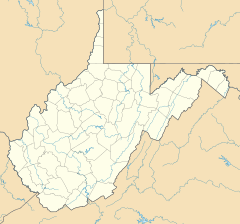Hilderbrand, West Virginia facts for kids
Quick facts for kids
Hilderbrand
|
|
|---|---|
| Country | |
| State | |
| County | |
| Elevation | 879 ft (268 m) |
| Time zone | UTC-5 (Eastern (EST)) |
| • Summer (DST) | UTC-4 (EDT) |
| GNIS ID | 1554714 |
Hilderbrand is a small, quiet place located in Monongalia County, West Virginia, in the United States. It's known as an "unincorporated community," which means it doesn't have its own local government like a city or town. Instead, it's managed by the county.
Contents
Discovering Hilderbrand
Hilderbrand is a unique spot in West Virginia. It sits at an elevation of about 879 feet (268 meters) above sea level. This community is found along the Monongahela River, a major river that flows north through West Virginia and Pennsylvania. Being near the river often means the area has beautiful natural scenery and a connection to the region's history.
What is an Unincorporated Community?
An unincorporated community like Hilderbrand is a group of homes and businesses that are not part of an official city or town. This means they don't have their own mayor or town council. Instead, services like roads, police, and fire protection are usually provided by the larger county government. It's a common way for smaller settlements to exist, especially in rural areas.
Where is Hilderbrand Located?
Hilderbrand is nestled in Monongalia County, which is in the northern part of West Virginia. West Virginia is a state in the eastern United States, famous for its mountains, forests, and rivers. Monongalia County is also home to the city of Morgantown, a larger hub in the region. Hilderbrand's location near the Monongahela River has historically made it a place connected to river trade and industry.
Hilderbrand's Connection to Coal
Historically, many communities in West Virginia, including some along the Monongahela River, were important for the coal industry. These places were often called "coal towns." While Hilderbrand is now a quiet community, its past might have been linked to the mining of coal, which was a big part of West Virginia's economy for many years. This history shaped the lives of many people who lived there.



